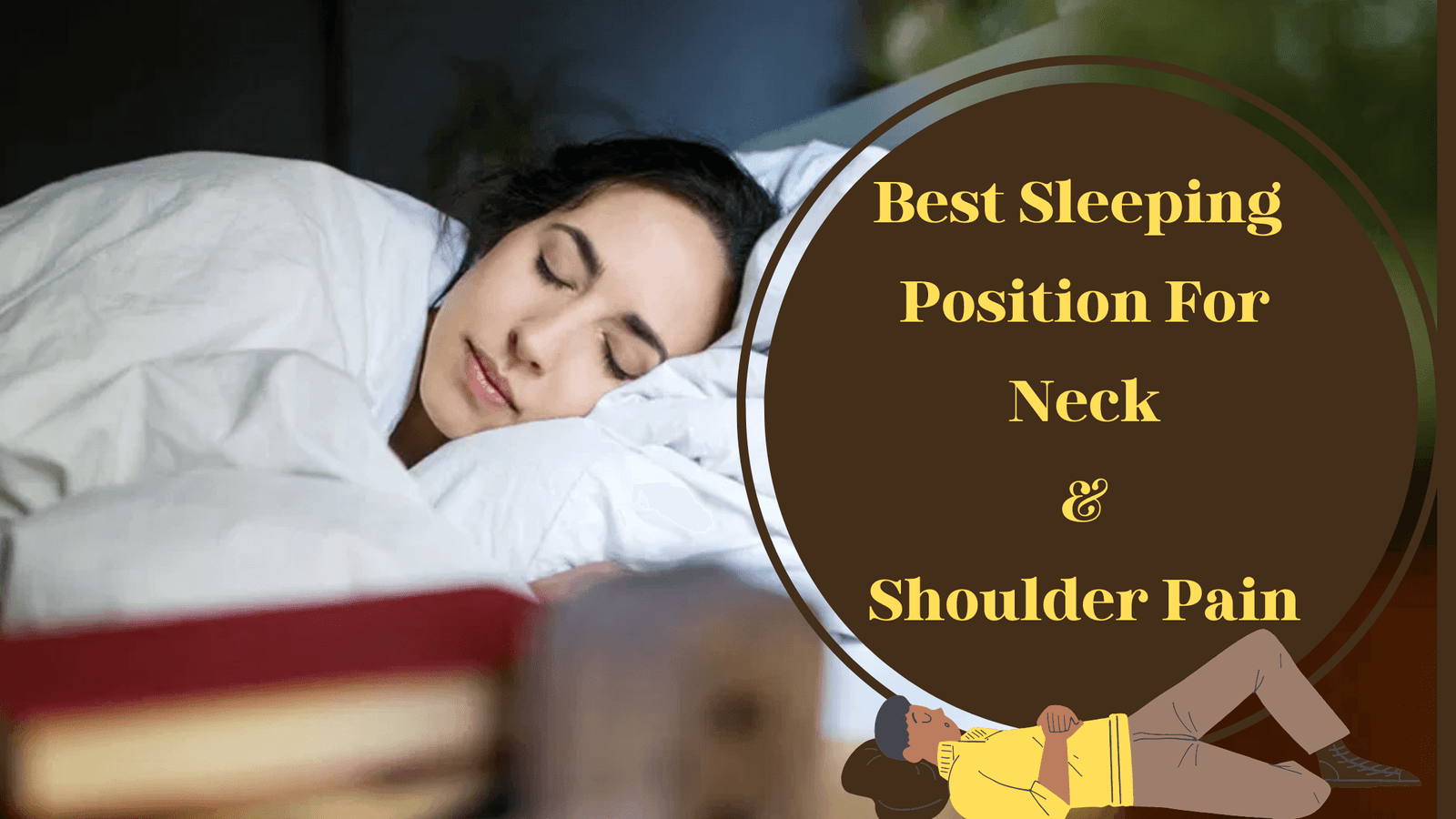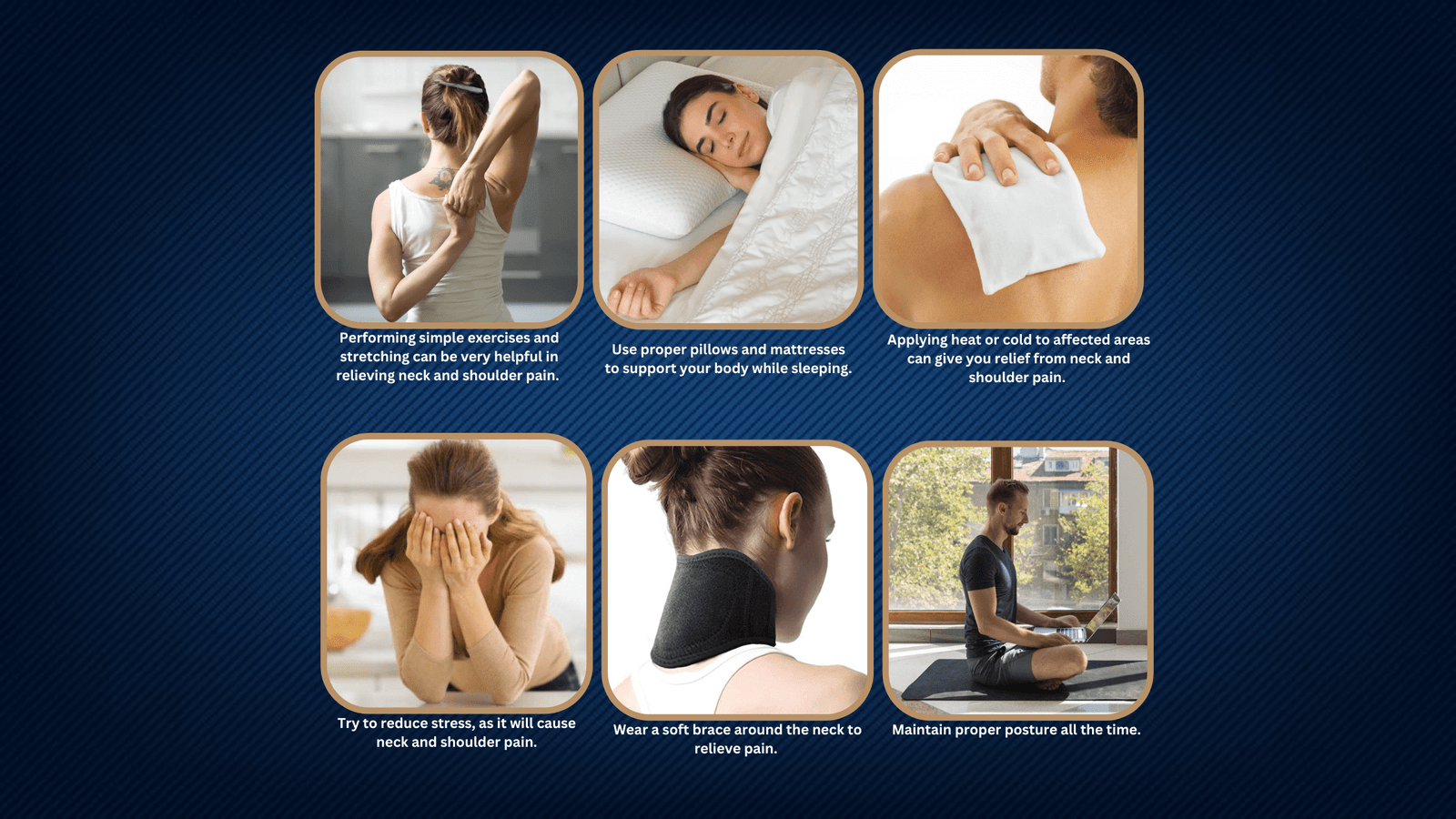Best Sleeping Position For Neck And Shoulder Pain – A Complete Guide To Follow!

It is common to experience neck and shoulder pain simultaneously as both are interconnected. It can be a very difficult experience. Pain can make it difficult to fall asleep and stay asleep. A lack of sleep can impact physical and mental health, thinking, and immune function. It is recommended to sleep at least seven to eight hours. The pain we suffer can be an impediment to the quality of our sleep. Neck and shoulder pain is usually the result of a strain or sprain.
Suitable Sleeping Positions To Reduce Neck And Shoulder Pain – How And Why?
The pain we experience can range from mild to very severe and it can include sensations like tingling, shooting pain, stiffness, numbness, spasms, and soreness. The majority of neck and shoulder pain is caused by overexertion, bad posture, and sports-related sprains and strains.
Soft tissue injuries often cause neck and shoulder pain. Your muscles, tendons, and ligaments are the soft tissues in your body. Injuries to the soft tissue can cause many kinds of pain, including stiffness, muscle spasms, and headaches. The neck and shoulders are joints with a large range of movement and thus such mobile joints are more prone to injury and thus can cause pain.

We all might have experienced a sore neck when we wake up in the morning. The pain and stiffness often radiate to our shoulders, leaving the upper part of our body in pain. It is probably one of the most annoying experiences we get when we wake up.
It can create a bad mood and can make simple movements like turning your head painful. It can spoil our entire day making each and every task challenging. In most cases, a sore neck and shoulders are the result of your sleeping position, the nature of the pillow and bed you use, or some other sleeping issues. Most of these can be corrected if you know some basics of proper sleeping positions and some techniques for better sleep.
Sleeping positions
Here we will discuss various sleeping positions commonly followed by people. Knowing each sleeping position is important. Following the right sleeping position can help you get proper sleep and avoid the pain associated with improper postures. We will highlight the best sleeping positions for neck and shoulder pain, as well as potential causes of nighttime discomfort and tips for getting a better night’s sleep.
Side Sleeping

Studies say that most adults sleep on their side. Side sleeping is good in many ways. It can lower the risk of pain in the spine, neck, and shoulders. It can also provide other benefits like reduced snoring and acid reflux. Side sleepers should keep their head and neck aligned with the rest of their body to prevent soreness and stiffness in the neck and shoulder muscles. Aligning this way can prevent excess weight from being placed on the neck and causing discomfort.
To get proper alignment, side sleepers have to choose pillows that keep their head in a neutral position. For this purpose, side sleepers have to use a large pillow or stack of pillows, so that they can prevent their head from sinking far toward the mattress, which can trigger neck pain. However, side sleepers need to avoid pillows or stacks of pillows that are too thick.
More pillows can raise your head and neck too much, which can also lead to neck pain. Additionally, side sleepers can alter their present pillows for support. One method is to roll up a hand towel and insert it along the long side of the pillowcase. The wrapped towel can be shaped to meet the neck’s natural curve and cover the area between the side of the face and the shoulder.
Side sleepers can check to see if the combination aligns the head and neck with the rest of the body after placing pillows for support. Taking a photo of the sleeper on their pillows and analyzing the image to see if their neck is aligned or if the cushions need to be further adjusted is one approach to ensure optimal alignment.
Back Sleeping

Back sleeping is the second most common sleeping position among adults. This sleeping position is often recommended for people with back pain. Sleeping on your back with proper head and neck alignment may help decrease pain in the neck and shoulders.
Back sleepers who modify their position with a couple of pillows may experience relief from neck pain. Keeping a small pillow at the base of the neck can keep the head in a neutral position. At the same time placing a pillow beneath the knees or thighs can keep the muscles along the spine in the natural position and helps to relax muscles in the neck.
Another thing to note about back sleeping is the placement of their hands during sleep. There are studies that suggest that certain hand positions can activate muscles in the upper back and neck, which cause the body to rotate and move the spine out of proper alignment. Neck and back pain can be reduced by in the back sleeping by keeping hands to the side or on the chest.
Sleeping on your stomach

Stomach sleeping is the worst sleeping position for neck and shoulder pain. While sleeping on the stomach our head is forced to turn to one side and this position put our neck in an unnatural position. This can cause strain on our neck and shoulders and can cause pain. Sleeping on the stomach can increase the weight of the neck and can limit recovery from pain.
Compared to other sleepers, stomach sleepers report more cases of neck pain. So stomach sleepers should avoid this position and must train themselves to sleep on their back or side to reduce neck pain. Those who are accustomed to this position can change this position by keeping pillows around the body. This can prevent turning onto the stomach until the new sleeping position is established.
Apart from poor sleeping positions, you can have sore necks and shoulders due to poor posture during daily activities. Spending too much time at a computer screen, sitting for a long time in one position, and carrying heavy loads can all adversely affect the neck and upper back muscles.
Some tips for those who suffer from neck and shoulder pain
Other than changing your sleeping position, you can make small changes to your sleeping spaces and add new steps to your daytime routine. Some of them are given below.

Use proper pillows and mattresses to support your body while sleeping.
Use pillows and mattresses that are not too soft and not too hard. Use a mattress that has a medium-firm designation. If the mattress is too hard you can add softness by using a foam topper. It is better to check the firmness before buying the product.
When you are choosing a pillow choose a memory foam pillow. It has a sponge-like material that adjusts to your body shape. It is comfortable and provides enough support for your head and neck. Avoid using feather pillows as they do not hold their shape and thus do not give much support to your head and neck. Synthetic fill pillows also do not hold their shape for long. Always choose a pillow that will hold its shape.
Applying heat or cold to affected areas can give you relief from neck and shoulder pain.
Apply either heat or cold before bedtime to have a good night’s sleep. It is recommended to use this method for a maximum of 15 minutes for each session. Take care to protect your skin while using hot and cold packs. Use a heating pad on a low setting or wrap an ice pack in a towel to protect from extreme temperatures. Do not sleep with hot or cold packs to avoid any chances of injury.
Performing simple exercises and stretching can be very helpful in relieving neck and shoulder pain.
Do simple workouts like neck stretches and rotations, shoulder rolls, and other gentle exercises. This not only relieves pain but also prevents the pain from recurring. Try to do these workouts daily for better results. Consult a physical therapist or other health care provider for the recommendation on correct exercises.
Maintain proper posture all the time.
Proper posture of your spine can help to relieve back pain and also prevents it from recurring. Always ensure that your spine is in its natural position while sitting, walking, and sleeping. Try to sit and walk straight to avoid neck and shoulder pain.
Wear a soft brace around the neck to relieve pain.
A neck brace can keep your neck in the correct position and can speed up recovery.
Try to reduce stress, as it will cause neck and shoulder pain.
Meditation and mindful breathing techniques help to relieve stress and prevent tension in the neck. Do simple yoga workouts to get relief from stress. It will be good to consult a psychologist or other mental health professional to know about some strategies to manage stress and pain.
Conclusion on Best Sleeping Position For Neck And Shoulder Pain
Neck and shoulder pain is a common ailment. Improper postures and other strains on the spine are common causes of this pain. You can get relief from pain if you follow proper postures and other techniques mentioned in this article.
We learned that bad sleeping positions can cause neck and shoulder pain. Sleeping on your stomach is very bad for your neck and shoulders. So try other sleeping positions like sleeping on your back and side sleeping. They are good positions for neck and shoulder pain.
Dr. Elizabeth Novello
Dr. Elizabeth Novello is a distinguished healthcare professional who has dedicated her career to the specialized field of pain-related healthcare. With a deep passion for alleviating suffering and improving the quality of life for those experiencing pain, Dr. Novello has become a recognized authority in her field. Dr. Novello’s journey in the realm of pain management began with her rigorous medical training, where she developed a profound understanding of the complexities surrounding pain and its treatment.
View All By Dr. Elizabeth






